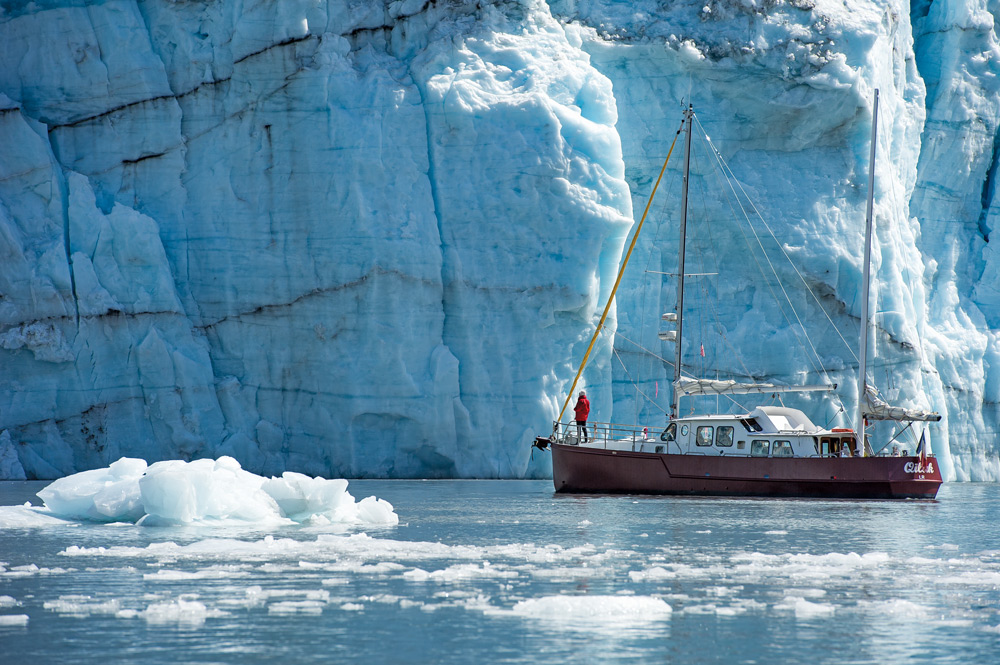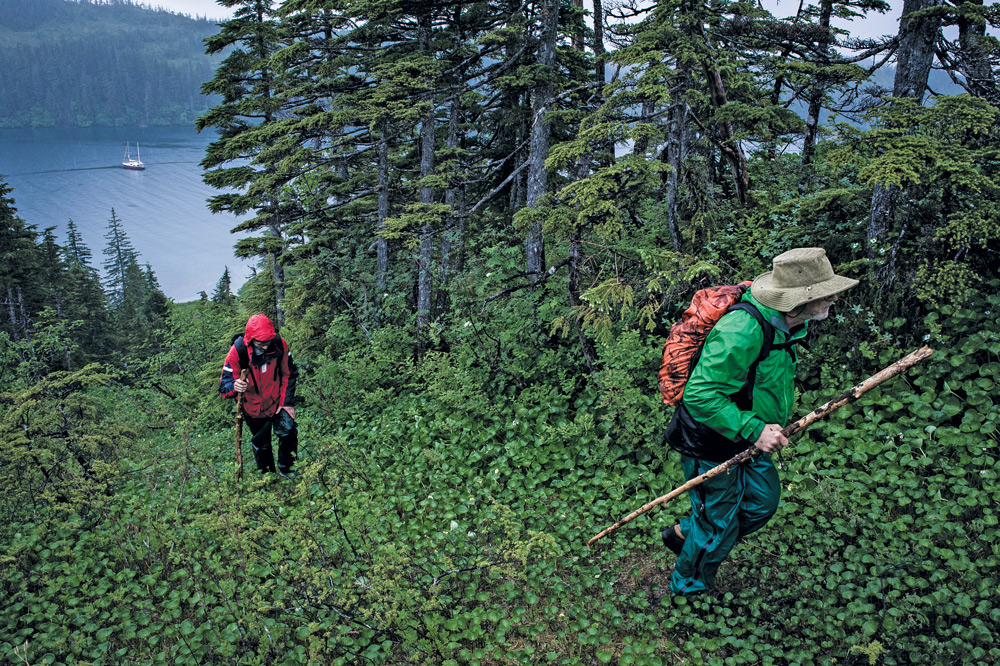Into the wild
A cruise through Alaska’s Prince William Sound brings sailors into the heart of the splendid wilderness

We pulled away from the mooring in Valdez in mid-June, heading for the Columbia Glacier. After motoring for two hours, we entered Columbia Bay, and suddenly it became much colder. Icebergs of all sizes surrounded us and Forest nosed Qilak up to the foot of the glacier. As we moved forward, the sound of crackling was heard over the purring of the diesel engine. Rather than pushing against the ice in the calm fjord, it felt as if Qilak was sailing through a giant glass of ice cubes. On the port side, two other huge glaciers that were once part of the main Columbia glacier plunged together into the bay. Blocks of entangled, compressed ice, amassed for millennia, arrived at their final destination—the sea—falling into the bay with a heavy thud.
We were at the end of the glacier, a wall of ice that begins 32 miles upstream and 10,000 feet up in the heart of the Chugach Mountains. Scientists are closely monitoring Columbia because it contributes more to sea-level rise than any other glacier in Alaska. Since 1983, when it began to retract, it has lost 12 miles in length and 1,600 feet on each of its main flanks. Scientist hope for a stabilization when it reaches the bottom of the bay. A tidewater glacier remains relatively insensitive to climate change because it generates its own micro-climate. Its behavior is typically composed of recurrent periods of advancing through freezing, alternating with rapid withdrawal, punctuated by periods of stability.

The forces Columbia generates are phenomenal, and deafening cracks of thunder come from deep within. When in motion, the glacier carves the cliffs like a bulldozer, lifting rocks and other debris that accumulates on the flanks of the glacier, in moraines that appear like black lines.
The tide began to rise and the ice floes became too close for comfort. Dorian climbed the mast to guide us through the small growlers. We stopped to observe a colony of sea lions. Hundreds of animals languished and wriggled on this beach and we could clearly hear their growls and long grunts. Moving cumbersomely on land, once they took to the water they became acrobatic dancers. Curious, they swam out to gaze at the boat, poking their muzzles with long whiskers out of the water.
We headed west to the next fjord to explore the Meares Glacier. Orcas kept us company, while keeping their distance and we watched their breath and fins popping above the water’s surface. Like Columbia, Meares is a tidewater glacier, but it is in an advanced phase. It begins in the mountains, and heads down the valley to the ocean, calving many icebergs there. At its approach, the contrast between ice and vegetation is striking. The height of the terminus is incredible, making us seem very small aboard Qilak. We turned southwest toward the uninhabited island of Culross, setting anchor in a sound with strong current running through it.


Comments